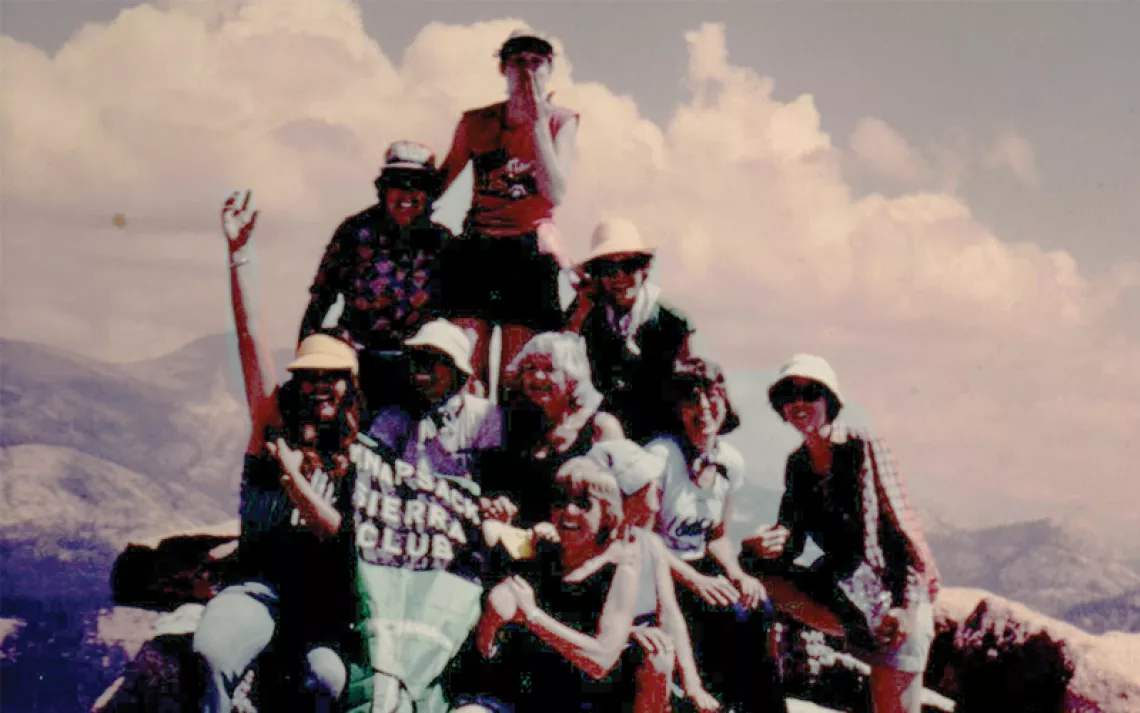How to Interpret Weather in the Backcountry
“Nature’s vital signs” according to a weather guru
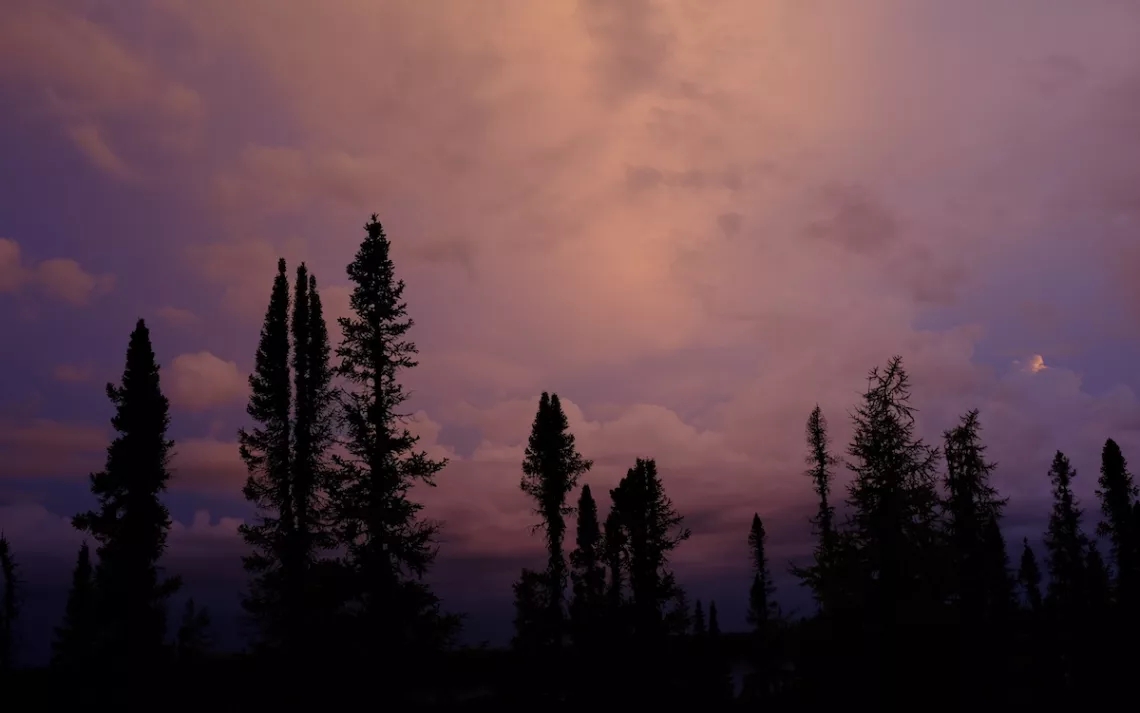
Photos by Conor Mihell
While they may never match the accuracy of modern forecasting, human senses are keenly attuned to weather trends. The sight of towering clouds and dark skies rightly trigger concerns. We feel rapid shifts in air pressure in our joints, and the tang of ozone in the air can alert us of an imminent electrical storm. This is because weather radar is hardwired into our genetic code—and such innate awareness is especially important for outdoor enthusiasts who venture beyond the grid of cellphone networks and wireless connections. For anyone, though, learning to tune into our own weather radar can help develop a closer connection to the natural world.
North Carolina–based reporter Dennis Mersereau has been fascinated by the weather for as long as he can remember. Mersereau’s latest book, The Skies Above, out last March from Mountaineers Books, explores what everyday phenomena can tell us about the weather—and how climate change is altering the norms. Sierra chatted with Mersereau to learn more about how backpackers, paddlers, and other wilderness enthusiasts can use simple observations to make accurate weather predictions. We also delved into the hidden truths (and shortcomings) of familiar adages, how to heed the warnings of extreme meteorological events, and the value of keeping a daily weather log. Here are Mersereau’s best tips.
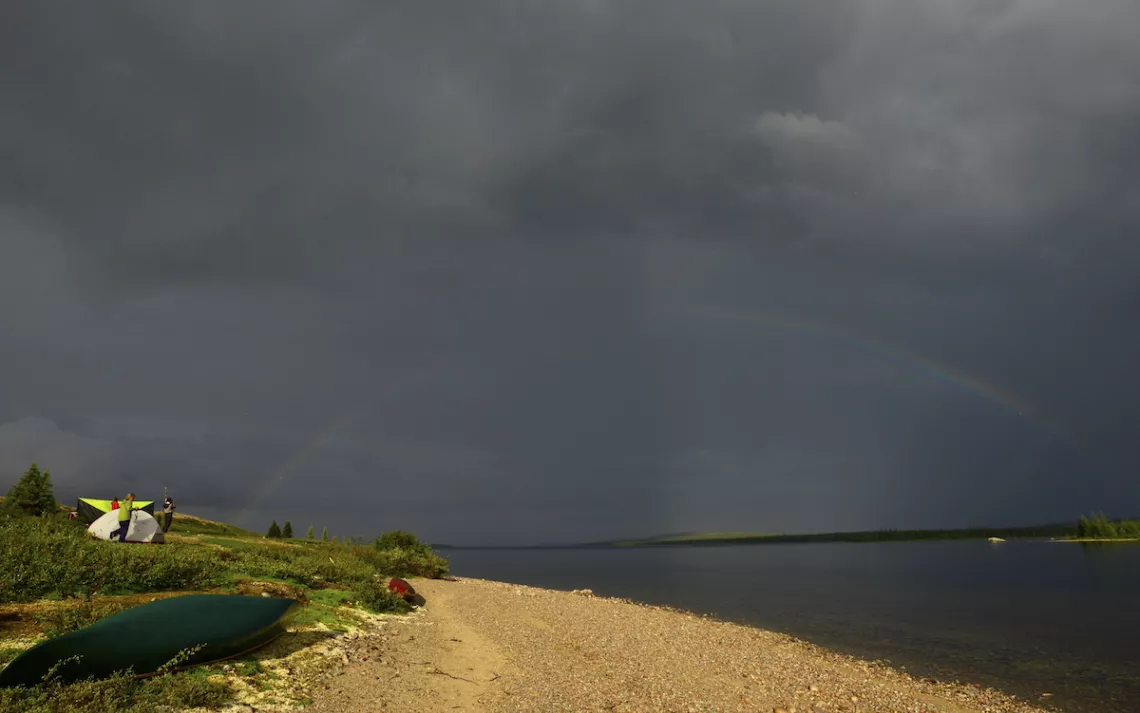
Watch the clouds: “Cloud-watching is a rewarding hobby any day,” he says, “but there’s plenty of benefit to gazing skyward to catch a clue about what’s to come later in the day.” For starters, watch for the signs of moisture in the upper atmosphere—haloes around the sun and moon—which indicate that precipitation is on the way. Anvil-shaped, cumulonimbus clouds, meanwhile, “form when a thunderstorm’s updraft cools off enough that it can’t rise any higher,” Mersereau explains. “The air starts spreading out, creating a flat cloud that makes the whole storm look like a blacksmith’s anvil.” These clouds tend to form on hot, humid summer days, especially in the Midwest, and can be tracked from miles away.
It’s important to be ready to take shelter—ideally indoors or inside a vehicle, but otherwise away from hilltops, mountain peaks, tall trees, or bodies of water—the moment thunder is heard. Lightning strikes have been documented up to 30 miles from the center of a thunderstorm.
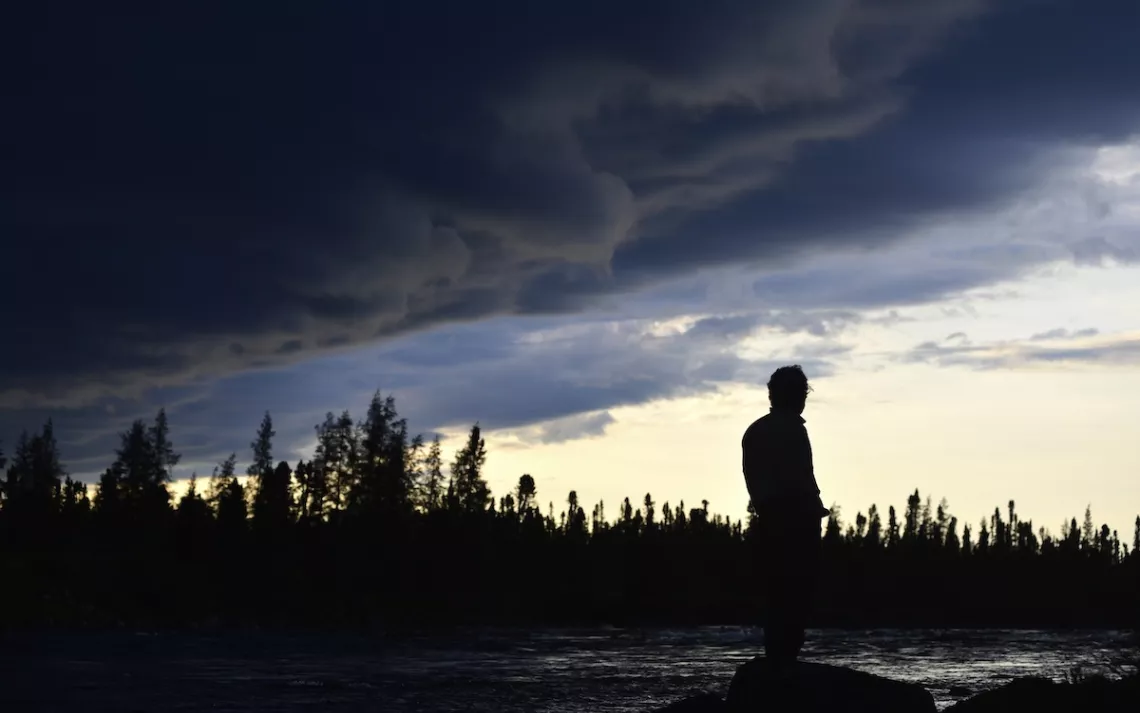
Be mindful of temperature swings and wind shifts: Temperature is a trickier predictor of upcoming weather, Mersereau says, especially during the spring and fall, when rapid changes are more common. He distinguishes two red flags: “If it suddenly warms up on an otherwise chilly day, it may mean a warm front has passed through your location—and that you might be at risk for severe thunderstorms, even in the dead of winter.” Second, be cognizant of strong north or northwesterly winds. “The arrival of a powerful cold front can send temperatures plummeting in a hurry,” Mersereau notes, “potentially endangering folks who don’t have the proper gear to withstand the bitterly cold temperatures that could ensue.”
Wind shifts provide strong clues around upcoming weather in marine environments and around the Great Lakes. Paddlers, for example, can expect fair weather when winds rotate in a clockwise manner (say from southeast to west) and count on deteriorating weather with counterclockwise shifts—and often stronger winds.
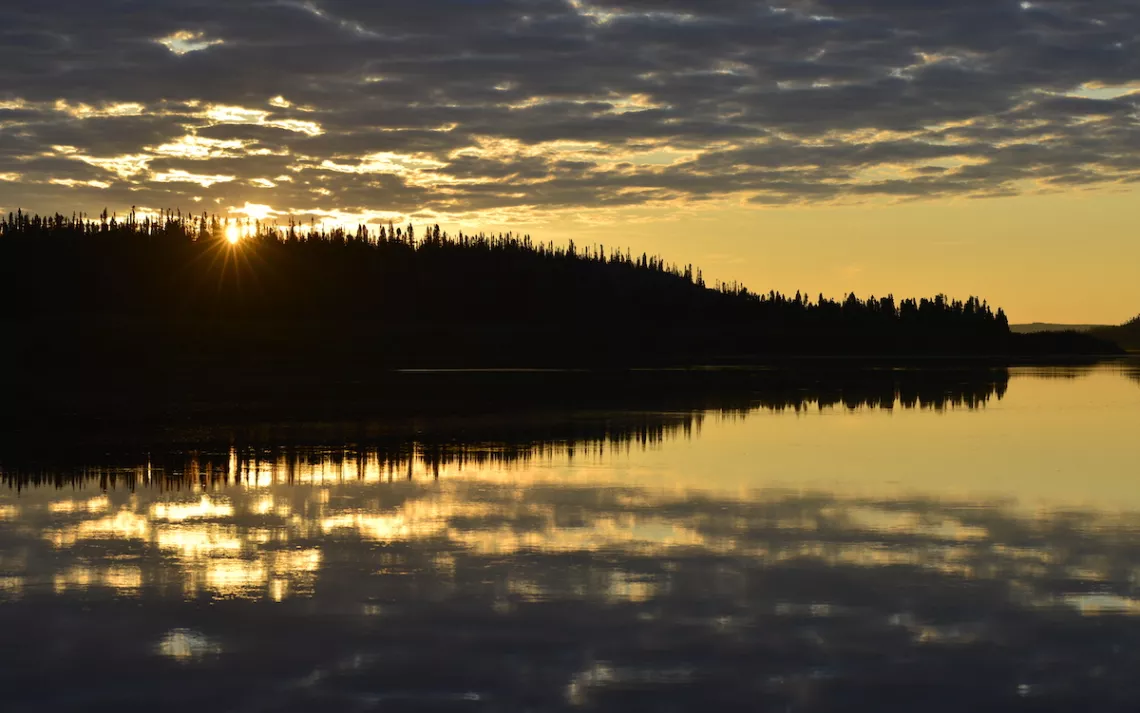
Take heed of red skies at night … but with a grain of salt: “Old sayings certainly served their purpose in their time,” says Mersereau. “There’s a kernel of truth to almost all of them. I love and often use the old adage that rain is likely when the leaves turn inside out on a muggy day. The humidity can allow a leaf to turn inside out and expose its light green underbelly in the breeze. It’s not always accurate, but storms have an easier time thriving on humid days."
“One adage that can cause some trouble, though, is the idea that green skies act as nature’s tornado warning,” he continues. “The classic green sky is the result of very heavy precipitation in a storm on the horizon. Much like lakes and ponds look murky green on a sunny day, we’re looking at sunlight shining through dense rain and hail up in the storm clouds. While storms strong enough to produce hail can produce tornadoes, it’s rarely true that green skies precede tornadoes.”
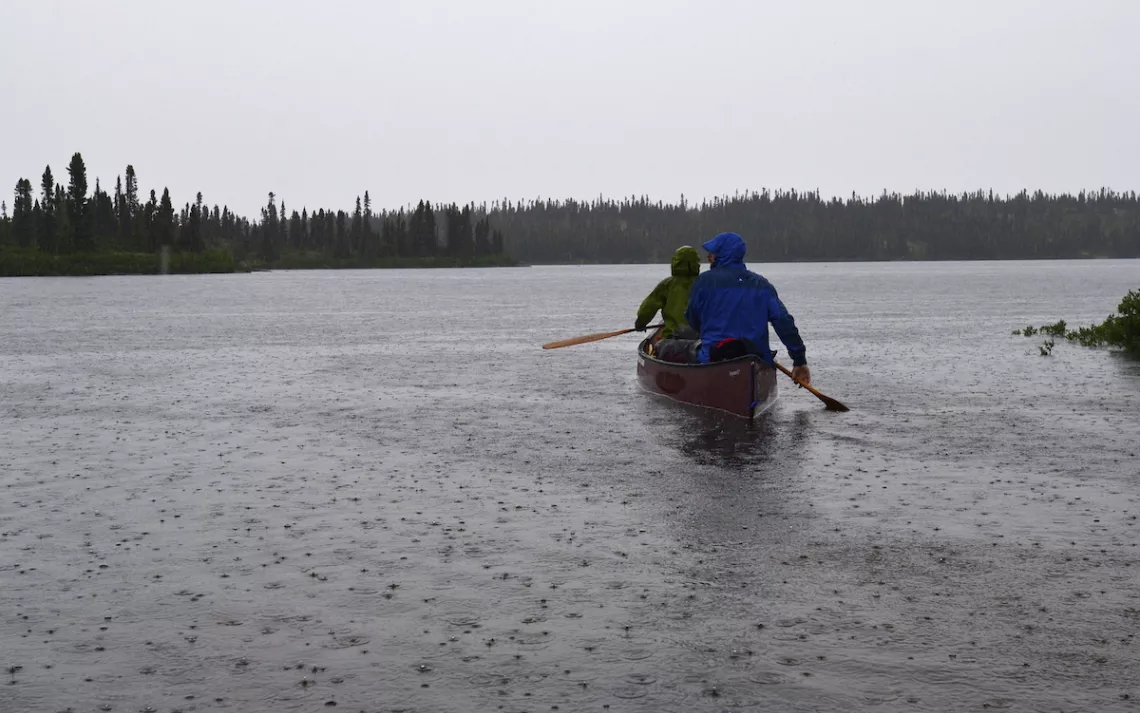
Take note of field predictions for extreme weather: Thunderstorms, tornadoes, and flash floods are particularly dangerous in wilderness settings. However, “nature is terrible at hiding its tantrums,” says Mersereau. “There are usually plenty of signs that you might be in for a bumpy ride.” Pileus, or cap clouds, are lens-shaped wisps that form over cumulonimbus clouds. “These are a sign of a healthy updraft and the potential for a powerful storm developing nearby,” says Mercereau.
Local knowledge is key, especially in dynamic environments like the desert. Flash floods are “hyper-local quirks,” he says. “It seems counterintuitive, but the most dangerous flash flood chances occur on sunny summer days in the desert."
“Thunderstorms in the desert Southwest can drop heavy rain over arid ground,” Mersereau explains. “Almost all of that water runs off instead of soaking into the impermeable soils. This water can travel for miles downstream in dry riverbeds called arroyos—which also serve as popular hiking trails. It’s not uncommon for flash floods to roll down arroyos and catch up with unassuming hikers, sometimes to a tragic result.”
Heed winds of (climate) change: Though some choose to ignore and deny, at our collective peril, the impacts of climate change are manifest in our daily weather. “You can see it in climatological data and hear it from older folks who lament how summer days are hotter nowadays and winter days aren’t quite as cold as they used to be,” says Mersereau. “Our changing climate warps our perception of what daily weather should look like. Heavier rainstorms, drier droughts, longer heat waves—it certainly makes predicting and preparing for extreme weather more difficult.”
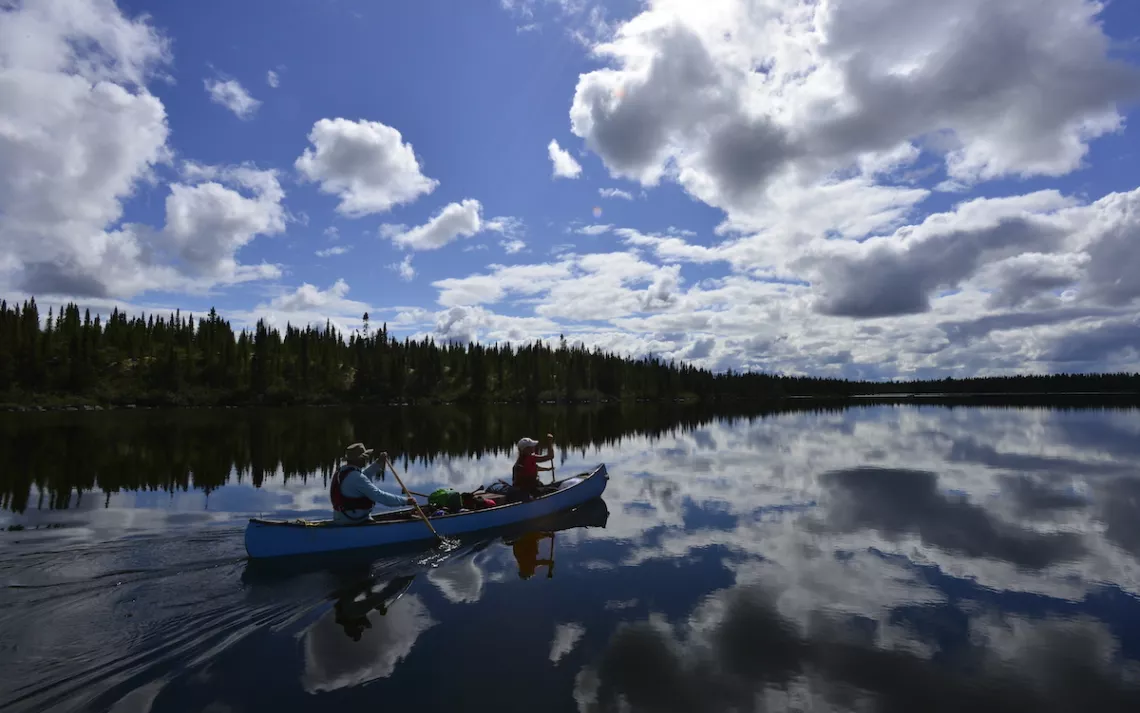
Keep a weather journal: Making a habit of keeping track of day-to-day weather, both at home and in the backcountry, is another way to connect with nature and develop a more profound sense of place. “The greatest value in keeping a weather log is that it helps you get in touch with the weather in a way that just staring out the window can’t match,” says Mersereau. “Temperature, wind speed, clouds, precipitation, and air pressure are nature’s vital signs. Keeping tabs on these vitals on a regular basis builds a mental and physical catalog of ‘normal,’ making you more aware of both regular patterns and when something seems off.”
 The Magazine of The Sierra Club
The Magazine of The Sierra Club

